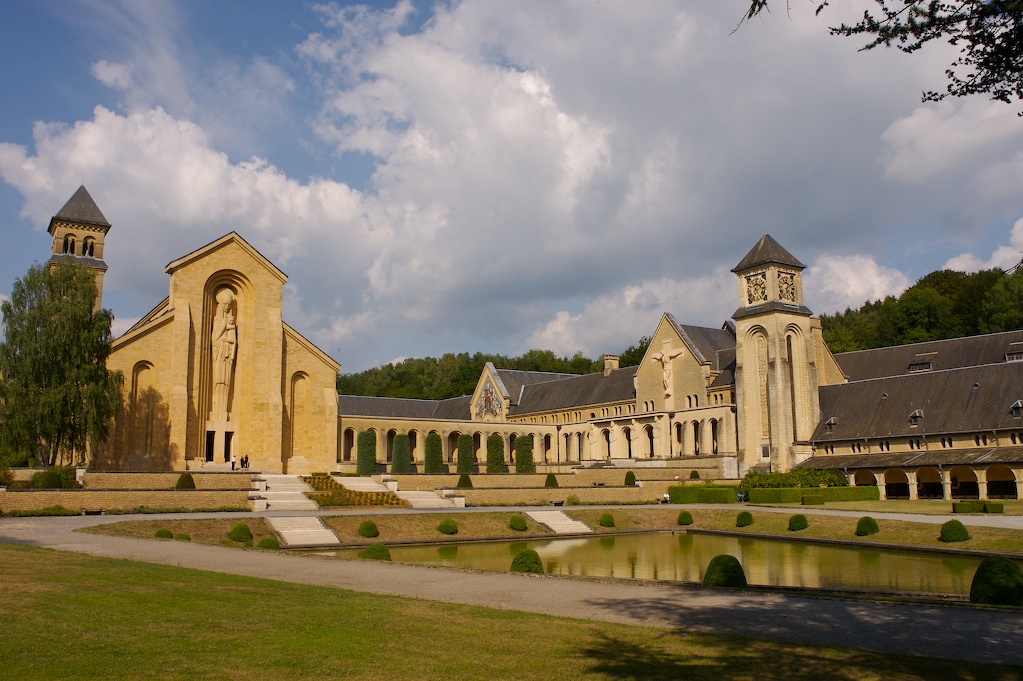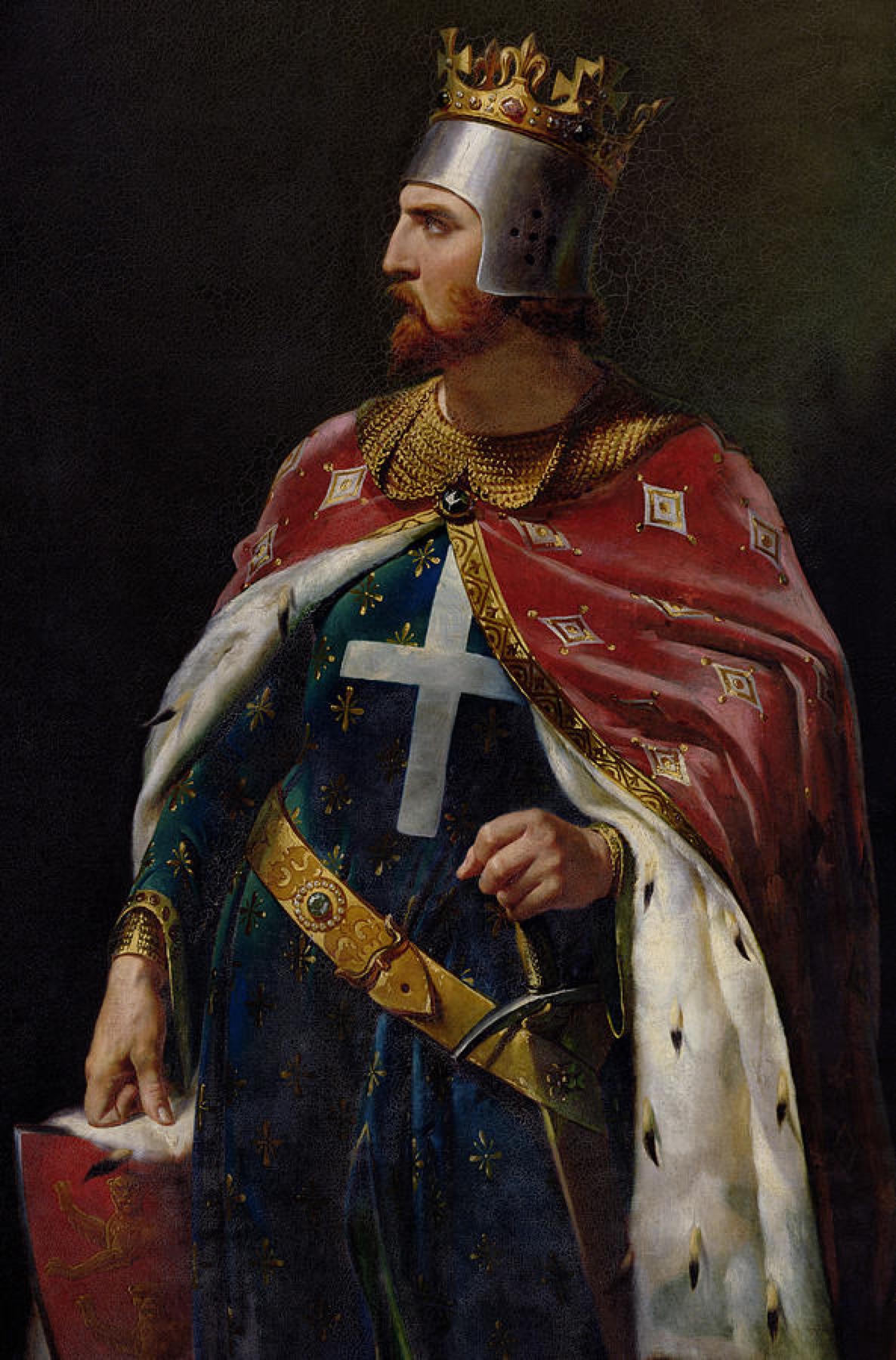|
Louis III, Count Of Chiny
Louis III (d. August 12? 1189), Count of Chiny,Arlette Laret-Kayser, ''Entre Bar et Luxembourg : Le Comté de Chiny des Origines à 1300''. Bruxelles (''Crédit Communal'', ''Collection Histoire''), 1986. son of Albert, Count of Chiny, and his spouse Agnes of Bar. He succeeded his father in 1162 and continued the family's support of the Abbey of Orval. He entered the Third Crusade alongside Emperor Frederick I Barbarossa, dying in transit in Belgrade. He married Sophie (d. 1207), whose family is unknown. Their children were: * Louis IV, Count of Chiny * Gertrude, married to Thierry II, Seigneur de Walcourt Walcourt (; wa, Walcoû) is a city and municipality of Wallonia located in the province of Namur, Belgium. On 1 January 2006 the municipality had 17,516 inhabitants. The total area is 123.18 km2, giving a population density of 142 inhabitan ..., Count of Montaigu. Upon his death, his son Louis assumed the role of Count of Chiny. References {{Reflist 1189 death ... [...More Info...] [...Related Items...] OR: [Wikipedia] [Google] [Baidu] |
Counts Of Chiny
The counts of Chiny were part of the nobility of Lotharingia that ruled from the 9th to the 14th century in what is now part of Belgium. It has been proposed that the County of Chiny was created in the early 10th century out of the ancient county of Ivois. The county now forms part of the province of Luxembourg in present-day Belgium. The county of Chiny included the present-day cantons of Virton, Etalle, Florenville, Neufchâteau, Montmédy and Carignan, as well as the castles of Warcq on the Meuse, which was built in 971 by Otto, ancestor of the later Counts of Chiny. It has also been proposed that there is a close relationship between the counts of Chiny and the early counts of Looz, the counts of Verdun and the bishops of Verdun.Jeantin, J. François Louis. (185859)Histoire du comté de Chiny et des pays haut-wallons Paris: J. Tardieu. The family of the counts of Chiny merged with the family of the counts of Looz. The final count of Chiny, Arnold IV de Rumingy, sold the coun ... [...More Info...] [...Related Items...] OR: [Wikipedia] [Google] [Baidu] |
Albert, Count Of Chiny
Albert (Albert I) (before 1131 – 29 September 1162), Counts of Chiny, Count of Chiny, son of Otto II, Count of Chiny, Otto II, Count of Chiny, and Adélaïs of Namur. He succeeded his father before 1131 and spent most of his time in Chiny, not taking part in the various conflicts which shook the region. He married Agnes, daughter of Reginald I, Count of Bar, Renaud I, Count of Bar and Gisèle Vaudémont, daughter of :fr:Gérard Ier de Vaudémont, Gerard, Count of Vaudémont. Their children were: * Louis III, Count of Chiny, Louis III, Count of Chiny * Thierry (d. after 1207), Lord of Mellier, married Elizabeth * Arnulf of Chiny-Verdun (killed in 1181), Bishop of Verdun, 1172–1181 * Alix (d. after 1177), married to Manasses of Hierges * Ida of Chiny, married to Gobert V, Lord of Aspremont (see Fredelon and the House of Esch for a discussion of their descendants) * A daughter, mother of Roger Walehem * Hughes, married to a daughter of Renaud de Donchéry * A daughter, A ... [...More Info...] [...Related Items...] OR: [Wikipedia] [Google] [Baidu] |
Abbey Of Orval
Orval Abbey (Abbaye Notre-Dame d'Orval) is a Cistercian monastery founded in 1132 in the Gaume region of Belgium and is located in Villers-devant-Orval, part of Florenville, Wallonia in the province of Luxembourg. The abbey is well known for its history and spiritual life but also for its local production of the Trappist beer Orval and a specific cheese. History First foundation The site has been occupied since the Merovingian period, and there is evidence that there was already a chapel here in the 10th century. In 1070, a group of Benedictine monks from Calabria settled here, at the invitation of Arnould, Count of Chiny, and Conrad I, Count of Luxembourg, and began construction of a church and a monastery, but after some forty years, possibly because of the death of Count Arnould, they moved away again. They were replaced by a community of Canons Regular, who completed the construction work: the abbey church was consecrated on 30 September 1124. In 1132, a group of Cis ... [...More Info...] [...Related Items...] OR: [Wikipedia] [Google] [Baidu] |
Third Crusade
The Third Crusade (1189–1192) was an attempt by three European monarchs of Western Christianity (Philip II of France, Richard I of England and Frederick I, Holy Roman Emperor) to reconquer the Holy Land following the capture of Jerusalem by the Ayyubid sultan Saladin in 1187. For this reason, the Third Crusade is also known as the Kings' Crusade. It was partially successful, recapturing the important cities of Acre and Jaffa, and reversing most of Saladin's conquests, but it failed to recapture Jerusalem, which was the major aim of the Crusade and its religious focus. After the failure of the Second Crusade of 1147–1149, the Zengid dynasty controlled a unified Syria and engaged in a conflict with the Fatimid rulers of Egypt. Saladin ultimately brought both the Egyptian and Syrian forces under his own control, and employed them to reduce the Crusader states and to recapture Jerusalem in 1187. Spurred by religious zeal, King Henry II of England and King Philip II of F ... [...More Info...] [...Related Items...] OR: [Wikipedia] [Google] [Baidu] |
Frederick I, Holy Roman Emperor
Frederick Barbarossa (December 1122 – 10 June 1190), also known as Frederick I (german: link=no, Friedrich I, it, Federico I), was the Holy Roman Emperor from 1155 until his death 35 years later. He was elected King of Germany in Frankfurt on 4 March 1152 and crowned in Aachen on 9 March 1152. He was crowned King of Italy on 24 April 1155 in Pavia and emperor by Pope Adrian IV on 18 June 1155 in Rome. Two years later, the term ' ("holy") first appeared in a document in connection with his empire. He was later formally crowned King of Burgundy, at Arles on 30 June 1178. He was named by the northern Italian cities which he attempted to rule: Barbarossa means "red beard" in Italian; in German, he was known as ', which means "Emperor Redbeard" in English. The prevalence of the Italian nickname, even in later German usage, reflects the centrality of the Italian campaigns to his career. Frederick was by inheritance Duke of Swabia (1147–1152, as Frederick III) before his i ... [...More Info...] [...Related Items...] OR: [Wikipedia] [Google] [Baidu] |
Belgrade
Belgrade ( , ;, ; Names of European cities in different languages: B, names in other languages) is the Capital city, capital and List of cities in Serbia, largest city in Serbia. It is located at the confluence of the Sava and Danube rivers and the crossroads of the Pannonian Basin, Pannonian Plain and the Balkan Peninsula. Nearly 1,166,763 million people live within the administrative limits of the City of Belgrade. It is the third largest of all List of cities and towns on Danube river, cities on the Danube river. Belgrade is one of the List of oldest continuously inhabited cities, oldest continuously inhabited cities in Europe and the world. One of the most important prehistoric cultures of Europe, the Vinča culture, evolved within the Belgrade area in the 6th millennium BC. In antiquity, Thracians, Thraco-Dacians inhabited the region and, after 279 BC, Celts settled the city, naming it ''Singidunum, Singidūn''. It was Roman Serbia, conquered by the Romans under the reign ... [...More Info...] [...Related Items...] OR: [Wikipedia] [Google] [Baidu] |
Louis IV, Count Of Chiny
Louis IV the Young (1173 – 7 October 1226), count of Chiny from 1189 to 1226, son of Louis III, count of Chiny, and Sophie. Louis was the last of the first dynasty of counts of Chiny. Having no son, he prepared his eldest daughter Jeanne as his successor. Louis marked his reign by issuing the first postage stamp in the county. He succeeded as count in 1189 when his father died on the Third Crusade, but was under the supervision of his mother and uncle Thierry, Lord of Mellier, because of his young age. He likely participated in the Albigensian Crusade, where he died in Cahors. He married Matilda of Avesnes, widow of Nicolas IV, Lord of Rumigny, and daughter of James, Lord of Avesnes and Conde, and Adele, Lady of Guise. They had three children: * Jeanne, Countess of Chiny, married to Arnold IV, Count of Looz * Agnes, Lady of Givet and Abemont * Isabelle, married to Otto, Lord of Trazegnies. Isabelle was referred to as Madame de Florenville during the Tournament of Chauvenc ... [...More Info...] [...Related Items...] OR: [Wikipedia] [Google] [Baidu] |
Walcourt
Walcourt (; wa, Walcoû) is a city and municipality of Wallonia located in the province of Namur, Belgium. On 1 January 2006 the municipality had 17,516 inhabitants. The total area is 123.18 km2, giving a population density of 142 inhabitants per km2. The municipality consists of the following districts: Berzée, Castillon, Chastrès, Clermont, Fontenelle, Fraire, Gourdinne, Laneffe, Pry, Rognée, Somzée, Tarcienne, Thy-le-Château, Vogenée, Walcourt, Yves-Gomezée. History The Basilica of Saint Maternus is a Gothic minor basilica, founded in 1026. It contains one of the oldest Madonnas in Western Christianity. In 1689, the Battle of Walcourt was fought here between French troops and the Grand Alliance during the Nine Years' War. See also * List of protected heritage sites in Walcourt This table shows an overview of the protected heritage sites in the Walloon town Walcourt. This list is part of Belgium's national heritage. See ... [...More Info...] [...Related Items...] OR: [Wikipedia] [Google] [Baidu] |
Counts Of Montaigu
The Counts of Montaigu were 12th century nobles of Lower Lotharingia who were closely associated with the Counts of Hesbaye, Counts of Duras and Clermont. This particular place called Montaigu (''Mons Acutus'', pointy mountain) was a castle located on the river Ourthe, opposite Rendeux, Marcourt near La Roche-en-Ardenne, La Roche in the Ardennes (department), Ardennes. The castle of Montaigu has been mostly destroyed, but a chapel dedicated to Saint Thibaut still exists upon the mountain on which it was built. The Counts of Montaigu were also lords of Rochefort. Rochefort, Belgium, Rochefort is a municipality in Namur, and these holdings passed by inheritance to the Walcourt family, who married into the family of the Counts of Chiny, particularly Louis III, Count of Chiny, Louis III. The Counts of Montaigu were: * Gozelo I, Count of Montaigu, Gozelo I (1038–1064) * Conon, Count of Montaigu, Cono (I), son of the previous (1064–1096) * Gozelo II, Count of Montaigu, Gozelo II, son ... [...More Info...] [...Related Items...] OR: [Wikipedia] [Google] [Baidu] |
1189 Deaths
Year 1189 ( MCLXXXIX) was a common year starting on Sunday (link will display the full calendar) of the Julian calendar. In English law, 1189 - specifically the beginning of the reign of Richard I - is considered the end of time immemorial. Events By place Europe * May 11 – Emperor Frederick I (Barbarossa) sets out from Regensburg, at the head of a German expeditionary force (some 15,000 men, including 4,000 knights). He has ensured that his lands are safe while he is away on crusade and leaves his son Henry VI in charge of the country. After leaving Germany, Frederick's army is increased by a contingent of 2,000 men led by Prince Géza, younger brother of King Béla III of Hungary. On July 27, he arrives at Niš and is welcomed by Stefan Nemanja, Grand Prince of Serbia. In order to ease his passage, Frederick makes diplomatic contacts with Hungary, the Byzantine Empire and the Seljuk Sultanate of Rum. * July 6 – King Henry II dies at Chinon, near Tours, ... [...More Info...] [...Related Items...] OR: [Wikipedia] [Google] [Baidu] |

.jpg)
